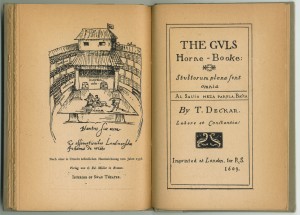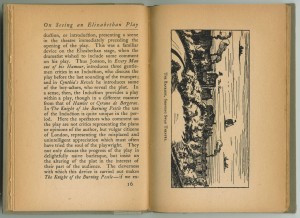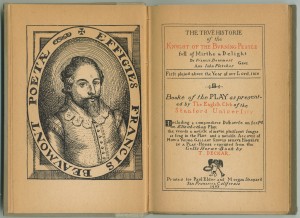
In March 1903, the English Club of Stanford University performed a production of “The Knight of the Burning Pestle,” an early 17th-century pastiche play by the English poet and dramatist Francis Beaumont. They were no doubt trying to capitalize on the huge success of the Classics Department’s production of Antigone in 1902, which, in addition to local performances, went on a road show to southern California. So, the English Club followed the same script: they performed the work at both Stanford and UC Berkeley, and they commissioned Paul Elder to publish a short book about it. That book, The True Historie of the Knyght of the Burning Pestle, happened to appear during the months when “Elder & Shepard” was transitioning to “Paul Elder & Company.” Thus the title page names “Paul Elder and Morgan Shepard” while the copyright page credits “The Tomoyé Press,” which, like “Paul Elder & Company,” wouldn’t be formally incorporated until May.
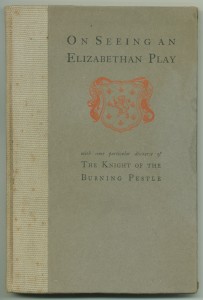
In 1903, it was thought that “Knight of the Burning Pestle” had been jointly written by Beaumont and John Fletcher, but modern scholarship now credits only the former. Francis Beaumont (1584-1616), a contemporary of Shakespeare, is remembered today as a dramatist, but during his lifetime was known as a poet. “The Knight of the Burning Pestle” is a satire on chivalry, along the lines of Don Quixote, and is considered the first complete parody play in the English language.
The title page credits the author as “The English Club of Stanford University,” but the book was almost certainly written by Raymond Macdonald Alden (1873-1924), then assistant professor of English literature at Stanford. Two months later, Alden would write Consolatio, also published by Elder.
The book begins with a short introduction called “On Seeing An Elizabethan Play,” followed by three short essays by “R. M. A.” (Alden): “The Theatre”, “The Knight of the Burning Pestle”, and “The Songs and Music.”
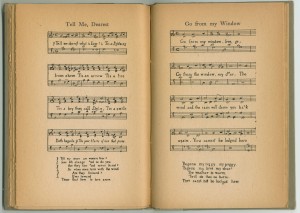
Following the music essay, the book includes a number of facsimiles: music to several songs, the interior of the Swan Theatre, and the title page of Thomas Dekker’s Guls Horne-Booke. Lastly, the authors include the text of Chapter VI of the Hornbook, “How a Gallant Should Behave Himself In a Play-house.”
Bibliographically speaking, Elder has made it difficult to ascertain what the title of this book really is. Normally, the title is what’s printed on the title page, which is in this case is The True Historie of the Knyght of the Burning Pestle. The cover, however, reads “On Seeing An Elizabethan Play, with some particular discourse of The Knight of the Burning Pestle.” And in the colophon on page 59, the authors call the book “The Knight of the Burning Pestle.” I have chosen the text of the title page.
